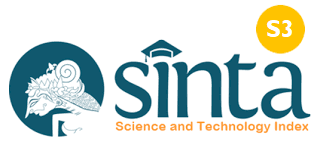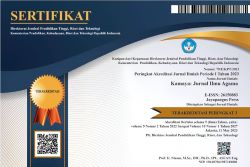Tindak Pidana Kekerasan Seksual Terhadap Anak Menurut Hukum Hindu
DOI:
https://doi.org/10.37329/kamaya.v3i2.436Keywords:
Criminal Act; Hindu Law; Sexual AssaultAbstract
Laws are basically made with the aim of creating security and order in people's lives. Although the law was made to bring order to life, but in reality there are still many people who break them. One of the acts that often happens in society today is the exploitation of children. One of the cases of child exploitation that occurred as a case of child sexual abuse. The contributing factors are internal factors (such as the proximity of the perpetrator to the victim) and external factors (such as being away from the crowd). Because of that, efforts to protect children really need to be done. According to Law Number 23 of 2002, a child is given protection from the womb until he is 18 (eighteen) years old. In this regard, in Hinduism we can also find a legal term known as dharma. Hindu law is divided into two, namely public law (Kantaka Sodhana or Hindu criminal law) and private law (Dharmasthiya or Hindu civil law). The Kantaka Sodhāna can be seen in a subjective sense (ius puniedi) and in an objective sense (ius poenale). Then, regarding the crime of sexual violence against children is not specifically regulated in Hindu law, but the relationship made between men and women who do not have legitimate ties of marriage (marriage), then this act is a crime called Lokika Sanggraha. Therefore, acts of sexual violence against children can be likened to the act of Lokika Sanggraha. In this regard, in Article 171 Ekadaso'dhyayah Mānava Dharmaśāstra, the deed can be blamed and threatened with imprisonment for 12 (twelve) years. The term tapa must be interpreted as imprisonment because in a state a person is imprisoned as suffering as a hermit.
References
Ekasana, I. M. S. (2012). Hukum Pidana Hindu Kantaka Sodhāna. Denpasar: Institut Hindu Dharma Negeri.
Moleong, L. J. (2014). Metodologi Penelitian Kualitatif Edisi Revisi. Bandung: PT. Remaja Rosdakarya Offset.
Pudja, G. dan T. R. S. (2004). Mānava Dharmaśāstra (Manu Dharmaśāstra) atau Veda Smṛti Compendium Hukum Hindu. Surabaya: Pāramita.
Saitya, I. B. S. (2019). Faktor-faktor penyebab tindak pidana kekerasan seksual terhadap anak. Vyavahara Duta, XIV(1), 1–7.
Undang-Undang Negara Republik Indonesia Nomor 23 Tahun 2002 Tentang Perlindungan Anak.Lembaran Negara Republik Indonesia Tahun 2002 Nomor 109.Tambahan Lembaran Negara Republik Indonesia Nomor 4235.
Downloads
Published
How to Cite
Issue
Section
License
An author who publishes in the Kamaya : Jurnal Ilmu Agama agrees to the following terms:
- Author retains the copyright and grants the journal the right of first publication of the work simultaneously licensed under the Creative Commons Attribution-ShareAlike 4.0 License that allows others to share the work with an acknowledgement of the work's authorship and initial publication in this journal
- Author is able to enter into separate, additional contractual arrangements for the non-exclusive distribution of the journal's published version of the work (e.g., post it to an institutional repository or publish it in a book) with the acknowledgement of its initial publication in this journal.
- Author is permitted and encouraged to post his/her work online (e.g., in institutional repositories or on their website) prior to and during the submission process, as it can lead to productive exchanges, as well as earlier and greater citation of the published work (See The Effect of Open Access).
Read more about the Creative Commons Attribution-ShareAlike 4.0 Licence here: https://creativecommons.org/licenses/by-sa/4.0/.





